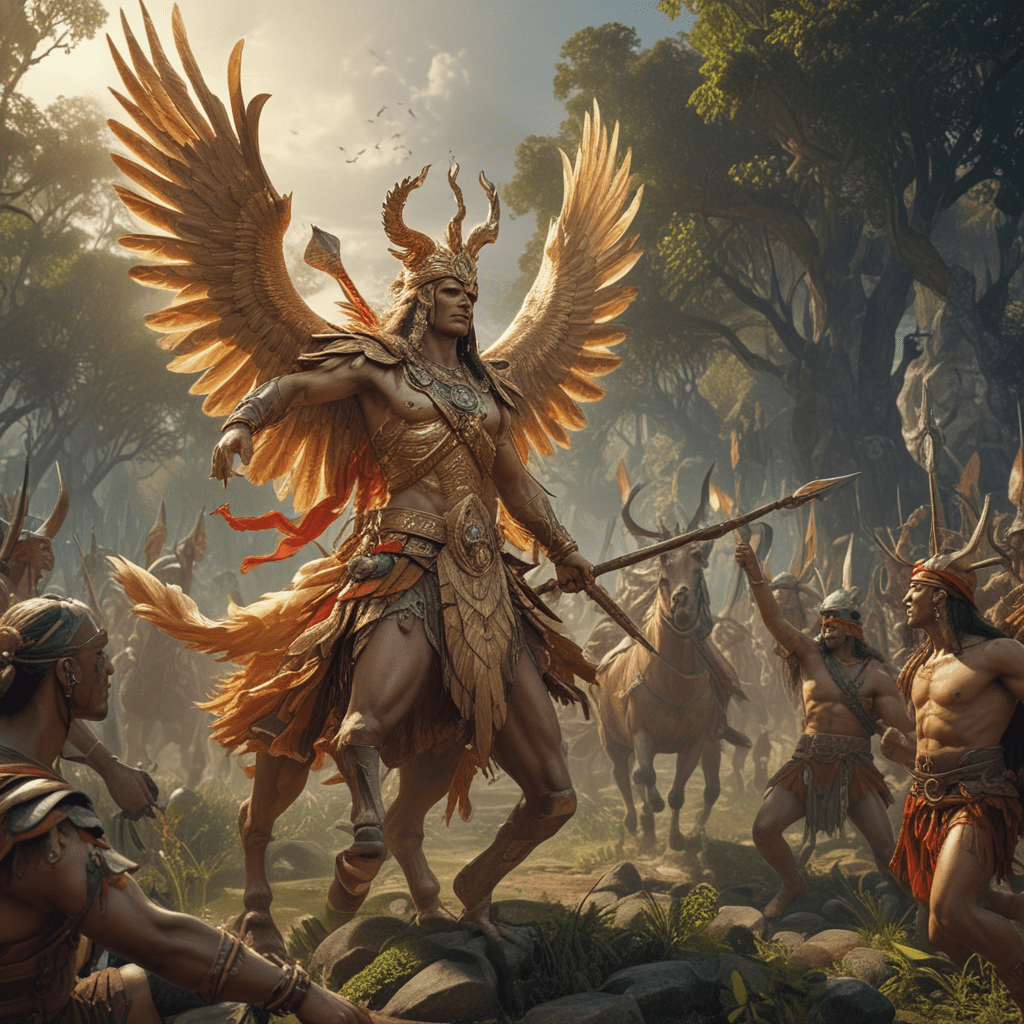The Garuda’s Journey: A Timeline of the Bird-Man’s Evolution Across Cultures
I. Introduction to the Garuda: The Mythical Bird-Man
The Garuda, a fascinating figure in mythology, is often depicted as a hybrid creature with the form of a bird and the body of a man. Its significance transcends various cultures, embodying themes of strength, protection, and divine connection. This mythical bird-man has captured the imagination of many, serving as a powerful symbol in religious and cultural narratives.
The concept of the bird-man appears across diverse cultures, often representing similar themes of guardianship, freedom, and transcendence. The Garuda’s evolution across these cultures highlights the interconnectedness of mythological themes and the shared human experience.
II. Origins of the Garuda in Hindu Mythology
The Garuda’s roots are deeply entrenched in Hindu mythology, where it is primarily known as the mount (vahana) of Lord Vishnu, one of the principal deities of Hinduism. In texts such as the Mahabharata and the Puranas, Garuda is portrayed as a formidable creature, capable of soaring through the skies and defeating serpents.
Symbolically, the Garuda represents various concepts:
- Divine Power: The Garuda is often seen as a symbol of divine energy and the ability to overcome obstacles.
- Protection: As the vehicle of Vishnu, Garuda embodies the protective aspect of the divine, safeguarding devotees from evil.
- Transformation: The ability to fly signifies transcendence and the quest for higher knowledge.
III. The Garuda in Buddhist Traditions
In Buddhism, the Garuda is adapted into a slightly different context but retains its majestic qualities. Known as the “Garuda” in Pali and Sanskrit, it is often seen as a protector and a powerful figure capable of overcoming obstacles, much like in Hinduism.
In Buddhist art and teachings, Garuda is frequently depicted:
- Artistic Representations: Garuda is commonly found in sculptures and paintings, often portrayed in dynamic poses that reflect its strength and speed.
- Teachings: In some Buddhist texts, Garuda symbolizes the potential for enlightenment and the struggle against ignorance.
IV. The Garuda in Southeast Asian Cultures
The influence of the Garuda extends significantly into Southeast Asian cultures, especially in Indonesia and Thailand. In Indonesia, the Garuda is a prominent figure in traditional storytelling and art.
Specifically, in Wayang Kulit shadow puppetry, the story of Garuda is vividly portrayed, showcasing its battles against evil forces and its quest for freedom:
- Wayang Kulit: Garuda often plays a heroic role, symbolizing the triumph of good over evil.
In Thailand, the Garuda is a national symbol, representing power and sovereignty. The depiction of Garuda in royal insignia emphasizes its significance as a protector of the kingdom:
- Royal Symbolism: The Garuda is often associated with the monarchy, showcasing bravery and vigilance.
V. The Garuda in Indigenous Cultures and Folklore
Beyond Hinduism and Buddhism, the Garuda or Garuda-like figures appear in various indigenous cultures across South Asia. These representations often share common traits with the original myth:
- Folklore: Many indigenous stories feature bird-men or similar hybrids, emphasizing themes of protection and guidance.
Cross-cultural comparisons reveal that the bird-man archetype resonates with many societies, reflecting a universal interpretation of strength and freedom.
VI. Modern Interpretations of the Garuda
In contemporary times, the Garuda continues to inspire artists, writers, and creators worldwide. Its powerful imagery is often utilized in various forms of art and literature:
- Contemporary Art: Modern artists draw upon the symbolism of the Garuda to convey themes of resilience and transformation.
- Literature: The Garuda has been featured in novels and stories, often symbolizing the struggle against adversity.
Additionally, the Garuda has found its way into popular culture, appearing in films, video games, and branding, showcasing its enduring appeal.
VII. The Symbolism and Significance of the Garuda Today
Today, the Garuda stands as a powerful symbol of strength, protection, and divine connection. Many people resonate with the Garuda’s attributes, viewing it as a source of inspiration in their spiritual journeys:
- Strength: The Garuda is often invoked in contexts that require courage and resilience.
- Protection: Many believe that the Garuda provides safety against negative forces and influences.
In modern spirituality, the Garuda serves as a reminder of the potential for transformation and the pursuit of higher truths.
VIII. Conclusion: The Enduring Legacy of the Garuda Across Cultures
The journey of the Garuda through various cultures highlights its evolution and significance in human mythology. From its origins in Hinduism to its adaptations in Buddhism and its representations in Southeast Asian cultures, the Garuda embodies timeless themes of strength, protection, and transcendence.
As we reflect on the Garuda’s legacy, we recognize its continued relevance in today’s world. The Garuda inspires individuals to embrace their inner strength and navigate the challenges of life, reminding us of the universal quest for freedom and enlightenment.



